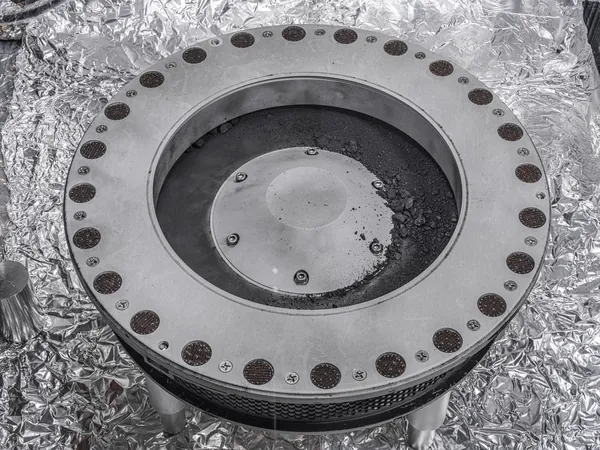
Physicists Achieve Blazing Heat: Gold Superheated to 33,740°F Without Melting!
2025-08-31
Author: Sophie
Breaking the Limits of Physics
In a groundbreaking experiment, an international team of physicists has defied traditional science by superheating gold to a staggering 19,000 Kelvin—equivalent to a scorching 33,740°F—without it melting. This remarkable feat challenges decades of scientific assumptions about temperature limits for solids.
How They Did It
Using ultra-fast laser heating combined with precise X-ray probes, the team managed to keep the gold sample intact while pushing it well beyond its normal melting point. This innovative technique allowed them to directly measure atomic motion in real time, offering unprecedented insights into warm dense matter (WDM), a high-energy state that provides clues to planetary interiors and fusion targets.
The Concept of Superheating
Lead author Thomas G. White from the University of Nevada, Reno, explains that superheating occurs when a solid is briefly heated above its melting temperature without losing its crystalline structure. By manipulating the conditions, the researchers managed to observe the quick-moving atoms and determine their temperature right before the material would typically lose order.
Challenging Long-Held Beliefs
Previously, scientists believed in the so-called 'entropy catastrophe' theory, suggesting that a solid couldn't be heated beyond three times its melting point without melting. This new evidence shows that rapid heating can bypass these old notions, allowing a solid to remain stable and ordered at drastically higher temperatures.
A New Era for Materials Science
This experiment relies on a lightning-fast energy pulse—lasting just 45 femtoseconds—to pump energy into a thin gold foil. An intense X-ray pulse captures the atomic motion to provide a direct measurement of the gold's lattice temperature. Because the heating happens so quickly, the crystalline structure remains intact long enough for precise readings.
Real-World Implications
These findings could reshape our understanding of material properties under extreme conditions. Accurate temperature measurements can enhance models for planetary formation, guiding knowledge about heat movement within Earth's core and enhancing fusion research, where controlled transitions from solid to ultrahot states are vital.
What’s Next?
Future research is anticipated to explore different materials and conditions to further uncover the boundaries of stability in solids. This study marks a significant leap forward, not just for theoretical physics, but also for practical applications that could revolutionize technology.
Read the Full Study
The complete findings are published in the journal 'Nature,' shedding light on this scientific milestone. Stay tuned for more updates and discover how these remarkable advances might change our understanding of the physical world!









 Brasil (PT)
Brasil (PT)
 Canada (EN)
Canada (EN)
 Chile (ES)
Chile (ES)
 Česko (CS)
Česko (CS)
 대한민국 (KO)
대한민국 (KO)
 España (ES)
España (ES)
 France (FR)
France (FR)
 Hong Kong (EN)
Hong Kong (EN)
 Italia (IT)
Italia (IT)
 日本 (JA)
日本 (JA)
 Magyarország (HU)
Magyarország (HU)
 Norge (NO)
Norge (NO)
 Polska (PL)
Polska (PL)
 Schweiz (DE)
Schweiz (DE)
 Singapore (EN)
Singapore (EN)
 Sverige (SV)
Sverige (SV)
 Suomi (FI)
Suomi (FI)
 Türkiye (TR)
Türkiye (TR)
 الإمارات العربية المتحدة (AR)
الإمارات العربية المتحدة (AR)